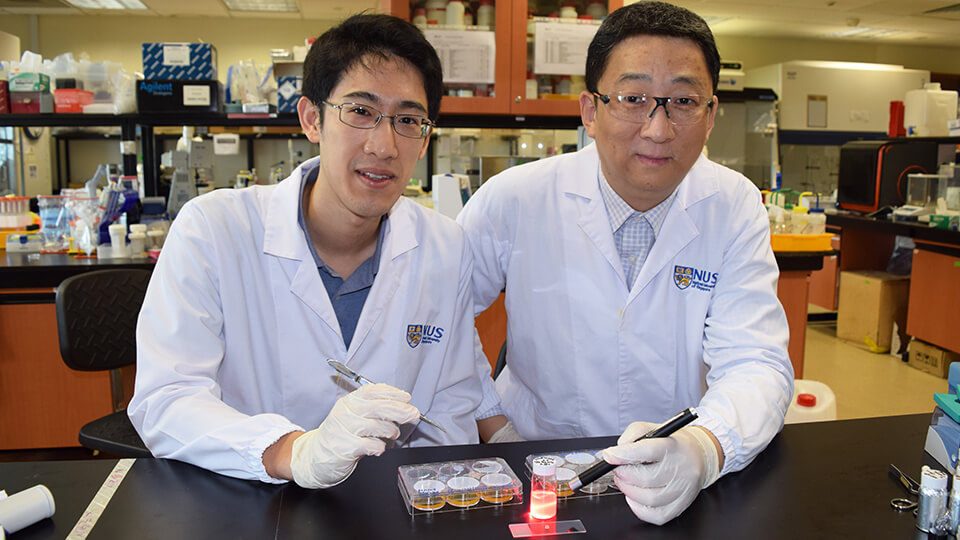A team of scientists from the National University of Singapore (NUS) developed a novel technology to wirelessly deliver light into deep regions of the body to activate light-sensitive drugs.
This potentially enables photodynamic therapy to be used to treat a wider range of cancers, such as brain and liver cancer.
PDT is a treatment method that uses a photosensitiser – a light sensitive drug that is triggered by a specific wavelength of light – to produce a form of oxygen that kills nearby cells. This provides a precision approach to cancer therapy that overcomes many of the whole-body side effects of classical drugs such as chemotherapy.
However, PDT has so far been limited to the treatment of surface cancers. For organs such as the brain or liver, the organ must be exposed by surgery before PDT can be used.
The study was led by Professor Zhang Yong and Assistant Professor John Ho, who are respectively from the Department of Biomedical Engineering and Department of Electrical and Computer Engineering at NUS Faculty of Engineering.
“Our approach of light delivery will provide significant advantages for treating cancers with PDT in previously inaccessible regions. Powered wirelessly, the tiny implantable device delivers doses of light over long time scales in a programmable and repeatable manner. This could potentially enable the therapies to be tailored by the clinician during the course of treatment," said Asst Prof Ho.
“The application of the technology can also be extended to many other light-based therapies, such as photothermal therapy, that face the common problem of limited penetration depth. We hope to bring these capabilities from bench to beside to provide new opportunities to shine light on human diseases,” said Prof Zhang



